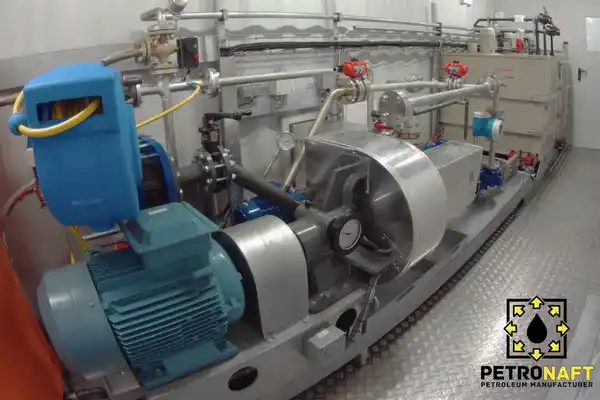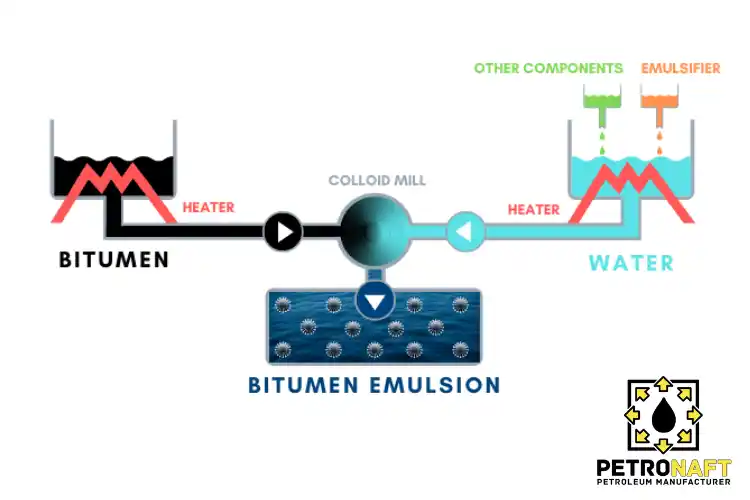The Ins and Outs of Manufacturing Bitumen Emulsion
In today’s construction and road-building sectors, manufacturing bitumen emulsion plays a vital role. This article delves into the intricacies of the bitumen emulsion production process, explores the various emulsion types, and emphasizes the significance of following industry guidelines. Additionally, it outlines the advantages of utilizing bitumen emulsions and examines the market trends that are influencing this sector.
1- Bitumen preparation
50 to 70 percent bitumen makes up emulsion bitumen. In most cases, the bitumen is of penetration grade 60-70 or viscosity bitumen 30. The ideal bitumen for manufacturing bitumen emulsion should be soft and have a viscosity of less than two poises. Occasionally, heating bitumen is necessary to achieve these conditions.
However, why should bitumen have these qualities in order to generate bitumen emulsion?
- A) To facilitate the transport and pumping of bitumen from vessels to the mill, bitumen viscosity should be less than two poises.
Additionally, low viscosity facilitates the mixing of bitumen with water.
- B) When milling, the bitumen should be soft enough to shatter into small particles.
2- The aqueous phase preparation
30-50% water is commonly included in a bitumen emulsion. In the aqueous phase, the dissolution of an emulsifier and other additions occurs. 1% of the weight of the aqueous phase is comprised by the emulsifier. It is applicable in both liquid and solid phases.
Solid emulsifiers, which are available as plates, granules, etc., need water to reach a specified temperature in order to dissolve.
In general, the water temperature should be kept below 70 degrees Celsius, since higher temperatures result in evaporation. The concentration of water falls as a consequence of evaporation. The concentration of the emulsion decreases. This alters the characteristics of the water phase and the emulsion bitumen as a consequence. Generally, amines, water, and acids are combined to produce cationic emulsifiers. Preparing anionic emulsifiers like fatty acids requires the dissolution of a base.
3-Mixing Bitumen and Water to Create an Emulsion
During emulsification, a specific bitumen emulsion mill or colloidal mill combines bitumen with a water phase solution (emulsifying solution). The colloidal mill had two components: a stationary component (stator) and a spinning component (rotator). At 1,000 to 6,000 revolutions per minute (rpm), the revolving component separates bitumen into tiny droplets. Inside the fixed component is the spinning component. The distance between them is 250 to 500 microns. By altering the space between the two pieces of the mil, the droplet size of bitumen may be altered.
It is possible to generate bitumen emulsion by mixing the water phase and bitumen in three distinct ways, depending on the design and quantity of production. The manufacturing bitumen emulsion process may be batch, semi-continuous, or continuous.

A) Bath development
When manufacturing quantities are minimal, this approach is used. The necessary quantity of bitumen and aqueous solution is decided based on the manufacturing bitumen emulsion specifications. The emulsifier solution and bitumen are kept in two distinct reservoirs. A conduit and a pump are then used to transport the substances to the colloidal mill. Finally, the bitumen emulsion is created by passing the components through the colloidal mill.
B) Semi-continuous production
In the semi-continuous process, the colloidal mill is in continuous rotation. Separate reservoirs exist for the water phase and the bitumen phase. Bitumen and water reservoirs provide the mill with feed, while two full reservoirs store bitumen and water. When the supplying reservoirs are depleted, the receiving reservoirs begin to transfer material. In two empty reservoirs, bitumen and water are replenished. There are always full reservoirs when using this strategy.
C) Continuous production
The colloid mill operates smoothly using the continuous approach. Pipelines independently transmit bitumen, water, the emulsifier, and acid. All material flows into a flow pipe prior to reaching the mill. They are combined in a single stream, which then enters the colloidal mill.
Purchasing This Product from Petro Naft
For more detailed information and to purchase the product discussed in this article, please visit the dedicated product page below. Alternatively, use the various communication channels provided on our site to register your purchase inquiry or take advantage of our expert guidance.
Prepared by the PetroNaft Co. research team.



